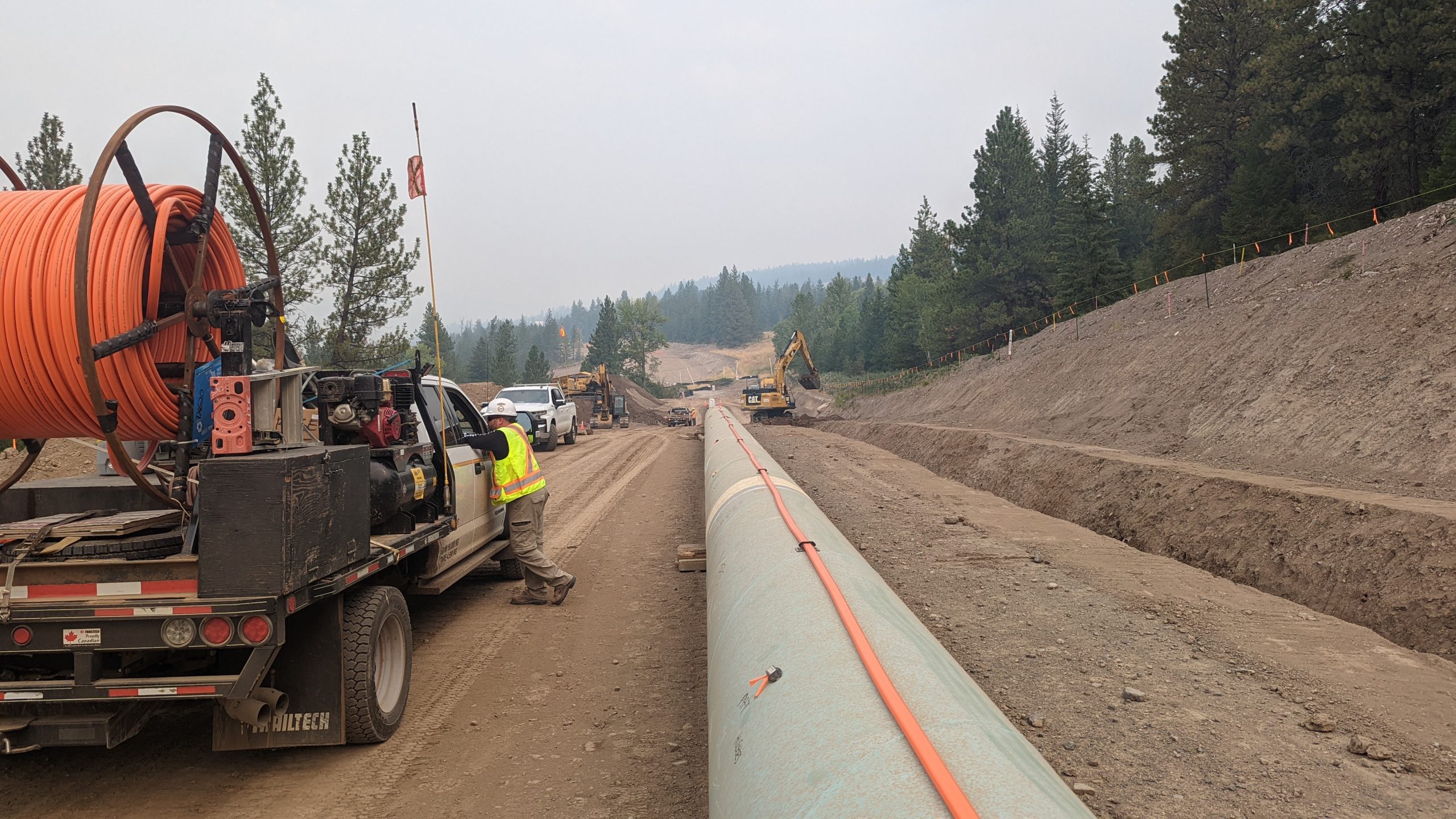Fibre optic monitoring technology is helping protect Canada’s newest oil pipeline.
Installed on the 1,200 kilometre expansion of the Trans Mountain pipeline, Hifi Engineering’s optical monitoring line is the longest deployment of its kind in the world.
The goal? Zero incidents.
‘We are using the speed of light,” said Hifi CEO Steven Koles.
“It is sensing every centimeter of the pathway that it is deployed on. If there is any sort of anomaly condition like a leak or an earthquake or a landslide, we can detect it immediately,” he said.
“There’s a lot of data generated across 1,200 kilometers of acoustics, temperature, vibration and strain. It’s very much a data management challenge.”
That data management challenge was solved in part by a former Canadian Olympic speedskater turned University of Calgary engineering professor, Arne Dankers.
Specializing in controls design, Dankers joined Hifi Engineering fresh off his PhD from Delft University of Technology in the Netherlands as part of the Mitacs program connecting new post-doctoral researchers with industry.
Funded in part by Mitacs and later by the Business Development Bank of Canada, Dankers designed programs capable of sifting through nearly infinite data points along fibre optic lines to discern between regular activity of fluid movement or ground shifting and more troublesome potentials.
As part of a rigorous testing program completed with a number of independent third-party testing agencies, Hifi took its technology to C-CORE, a testing organization in St John’s, Newfoundland.

The fibre optic lines and associated software were put through various potential real-world scenarios along a pipeline in different environments. According to C-CORE, the system caught every potential leak and had zero false positives.
“We had to try and characterize how the sound is travelling through the pipeline,” explains Dankers.
“It changes depending on the pressure on the pipeline, on the fluid in the pipeline and the density of the fluid. The sound will propagate differently under different pressures or different types of oil,” he said.
“We’re listening for the causes of the leaks, instead of trying to listen for the sound a leak makes.”
Incidents on pipelines in Alberta are on a downward trend. In its most recent Pipeline Performance Report, the Alberta Energy Regulator (AER) reported a 46 per cent drop in incidents in 2023 compared to a decade earlier.
A focus for the AER has been around the reduction of incidents related to contact damage from improper digging around pipelines. These types of incidents have seen a 17 per cent reduction since 2022.

After Hifi, Dankers went back to academia to teach electrical controls at the University of Calgary’s Schulich School of Engineering, but his partnership with the company hasn’t ended.
“They hire interns every year from the U of C. [Students] get to do a one-year internship in their third year. [At Hifi] they get great experience, especially at a smaller company,” said Dankers.
Hifi’s success with Trans Mountain has led to discussions around North America and beyond for potential deployment of the technology – and not just for oil and gas. Koles said the technology is of interest for pipelines used in carbon capture and storage, as well as hydrogen and municipal water services.
Danker’s experience as a Team Canada silver medal-winning speed skater at the 2006 Turin Olympics helped prepare him for a project like Hifi’s.
“Sport teaches you a lot. You have to set a goal, and you don’t always make your goal. Even if you don’t, you still learn a lot along the way,” he said.
“I did achieve my goal.”
The unaltered reproduction of this content is free of charge with attribution to the Canadian Energy Centre.
